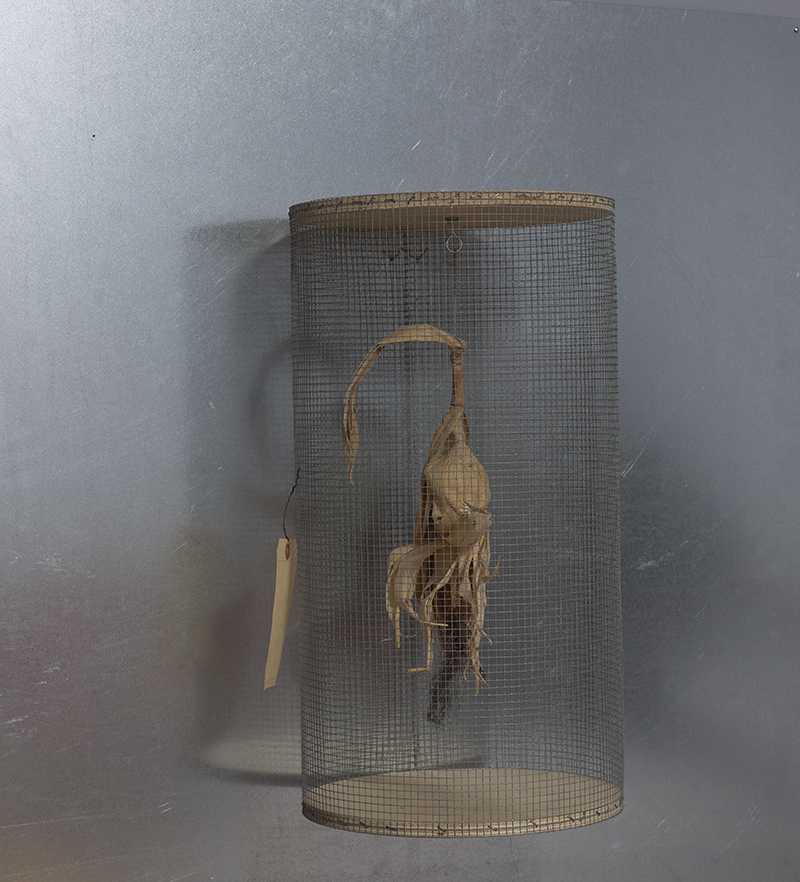Object of the Month: Mel Chin’s "Caged Corn"
By Bowdoin College Museum of ArtWhat We Produce: A Reflection on Mel Chin’s "Caged Corn"
Perhaps the most striking object in the current exhibition Material Resources: Intersections of Art and the Environment is not a marble sculpture or an oil painting, but a dried and shriveled ear of corn. Mel Chin’s Caged Corn, 1991 is the representational remains of his larger project Revival Field, 1990–1993, where, in collaboration with scientist Dr. Rufus Chaney, Chin (born 1951) planted special crops to see if the plants which naturally absorb heavy metals could decontaminate land. This specific variety of corn collects cadmium. The resulting ear of corn is both an artifact of Revival Field and a relic of the previously polluted land.

However, the original ear from Revival Field was destroyed while in Chin’s storage. Put simply by him, it was “eaten by vermin.” The ear on display at the Museum is one which was regrown by Chin at his house, containing no cadmium. Chin went to extreme lengths to replicate the exact variety of corn, so that this imitation ear could be a near duplicate of the first. It took him two growing seasons to cultivate, and once harvested, a team of his assistants had to gently tug this imposter ear to appear similarly avian as the first.
Caged Corn and its display at the Museum raise questions about the relationship between installation art and scientific experiments. Although the ear is a close symbol of the original piece, does it matter that it’s a replica? Or that it doesn’t contain in its dehydrated kernels any of the pollutant?
Personally, in an ideal world, I would have wished to see the chewed remnants of the original ear accompanied by the taxidermized body—which now contains the toxic cadmium—of the mouse or rat who ate it. Caged Corn serves as a cruel reminder of the permeance of the pollution to our planet. Just as the ear sits in a cage created by Chin at the Museum, we live in a toxic cage that we’ve created around our planet.
Brennan Clark, Class of 2020